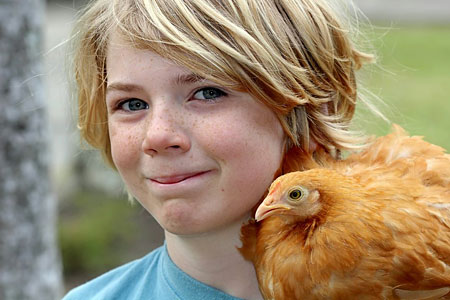
Does caring for bantam chickens differ from keeping larger chickens? Yes and no. Any differences generally relate to the bantams’ smaller size and to their typically gentle temperament.
Predator Protection
Bantam chickens are so light in weight that most predators can easily carry one away. And because they have shorter legs, they can’t run to evade predators as well as larger breeds.
On the other hand, some bantams are better flyers than most chickens. That can be an advantage for evading predators, but a disadvantage for keeping the bantams confined.
A covered run therefore serves two purposes for bantam chickens. It keeps them from flying out, and it keeps predators from flying in. For a run that’s too big or awkward to cover, a tall fence will keep bantams in, and shrubs or other features will give them places to hide under.
Facility Adjustments
Bantam chickens have much the same facility requirements as larger breeds — dry conditions, draft prevention, adequate space for the size of the flock, and so forth. However, where larger breeds require 3 to 4 square feet of coop space per chicken, a bantam flock needs only 2 square feet per chicken.
Access to feed and water should be about the height of the chickens’ backs. So for a flock of only bantams, or one with both bantams and large chickens, feeders and drinkers must be lower than they would be for a flock of only large chickens.
Also, many bantam breeds like to perch high up. Offering multiple perches at differing heights gives each individual a choice.
Mixed Flock
When caring for bantam chickens in a mixed flock, breed compatibility is essential for preventing larger, stronger chickens from bullying the smaller, less aggressive birds. For the most peaceful arrangement, combine breeds with similar temperaments. To help you make the most suitable selections, Cackle Hatchery® helpfully lists temperament on each breed’s “Breed Facts” page.
Helpful Links
10 Reasons to Keep Bantam Chickens
How to Mix Different Chicken Breeds in One Flock
How to Care for Bantam Chicks Shipped By Mail
And that’s today’s news from the Cackle Coop.
Gail Damerow is the author of several books about keeping poultry, including Storey’s Guide to Raising Chickens.

